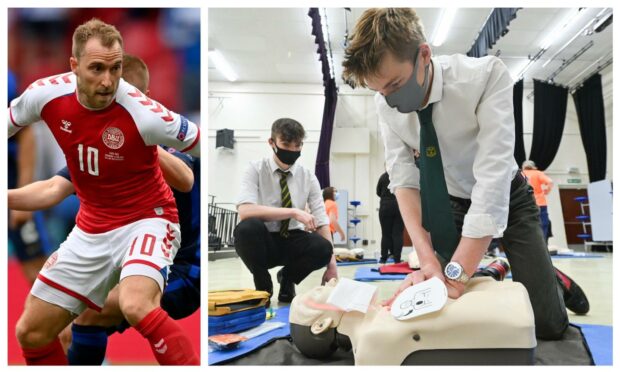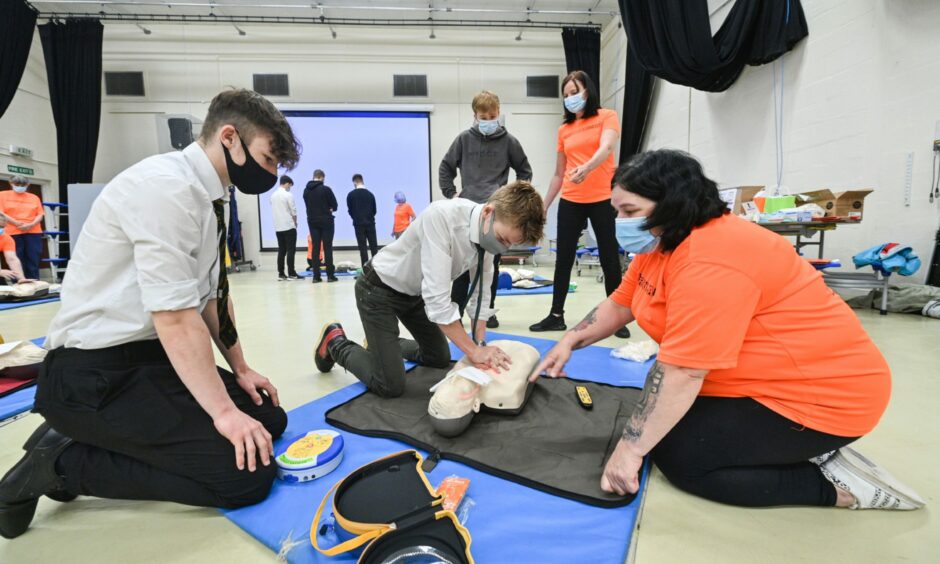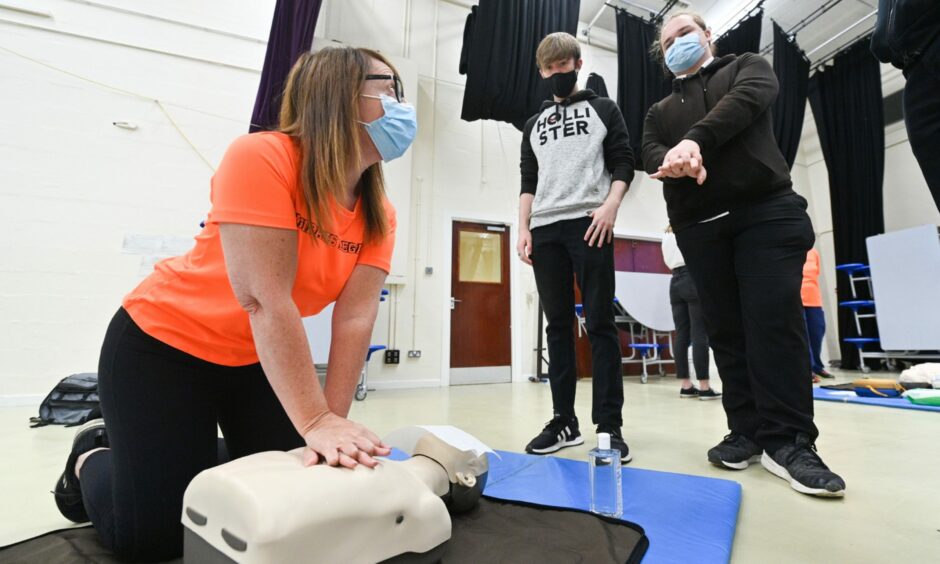School pupils shocked at the sight of Christian Eriksen having a cardiac arrest in Euro 2020 have learned CPR so they can also save a life.
Scenes of the Danish footballer, 29, needing emergency treatment shocked many across the world.
Now pupils from Milne’s High School in Fochabers who watched the match have learned the CPR skills that saved Eriksen so they too can react when needed.
School pupils shocked at Eriksen collapse
Charity Keiran’s Legacy regularly visit schools to teach teens the skills needed to perform CPR or use a defibrillator in an emergency.
The charity was established following the death of 16-year-old Keiran McKandie near Elgin in March 2016.
The tragedy exposed the need for those at the scene to know first response skills due to the nearest ambulance being 38 miles away.
Classroom visits have been run by the charity to normalise the experience so youngsters feel confident enough to react if an emergency arises.
And the sight of footballer Eriksen needing CPR on the pitch has hammered home how vital the skill can be for Milne’s High School pupils.
Rory Milne, S6 student, said: “I was watching the football when Christian Eriksen collapsed.
“It was so surprising because if it can happen to him then it can happen to anyone because he’s a footballer at the peak of his fitness.”
Why teach school pupils CPR?
UK lags behind cardiac arrest survival rates
Statistics show that just 10% of people who suffer a cardiac arrest in the UK outside of hospital survive.
However, in Norway, where CPR has been part of the national school curriculum since 1961, the survival rate is as high as 25%.
Sandra McKandie, Keiran’s mother and chairwoman of Keiran’s Legacy, said: “People think it just happens to older people but it’s not the case at all.
“It can happen to sportspeople or anybody, which is why the more people who are able to help the more lives like Christian Eriksen can be saved.”
CPR trainer Lorna Medcalf, from Keith, who is a first aider at major north-east events, explained people’s hesitations while learning the skill are quickly overcome.
She said: “I think a lot of people are scared to use defibrillators because they’re worried about doing something wrong.
“The machine actually talks you through it now so nothing can go wrong, and once people see that then they find it easy.”


